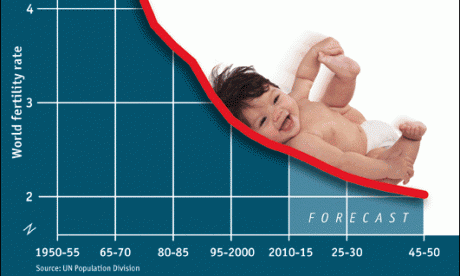NEW HAVEN: It’s no surprise that the world’s population is at an all-time high – exceeding 7 billion – although many might not know that it increased by 5 billion during the past century alone, rising from less than 2 billion in 1914. And many people would be surprised – even shocked – to know that over the past three decades, fertility rates have plummeted in many parts of the world, including China, Japan and even significant regions of India.
These Asian giants have not been alone. In much of Europe, North America, East Asia and elsewhere, the average number of children born to women during the course of their childbearing years has fallen to unprecedentedly low levels.
Our new book, The Global Spread of Fertility Decline: Population, Fear, and Uncertainty (Yale University Press, 2013) analyzes these trends and the demographic, political and economic consequences and uncertainties as low fertility has become a global phenomenon. Like other facets of globalization, low fertility rates are by no means universal: High fertility persists in sub-Saharan Africa and in parts of the Middle East, but elsewhere low fertility is more the rule than the exception. These underlying trends in childbearing mean that in the near future the rate of population growth both in Europe and Asia are likely to decline. The world is not on a path of unrestrained demographic growth, as some believe. People all over the world have hit the brakes.
Thirty years ago only a small fraction of the world’s population lived in the few countries with fertility rates substantially below the “replacement level” – the rate at which the fertility of a hypothetical cohort of women would exactly replace itself in the next generation – normally set at 2.1 children per woman for populations with low mortality conditions. Fast forward to 2013, with roughly 60 percent of the world’s population living in countries with such below-replacement fertility rates. Continue reading
Sources
- YaleGlobal Online
- Image: The Economist
News category: Features.




